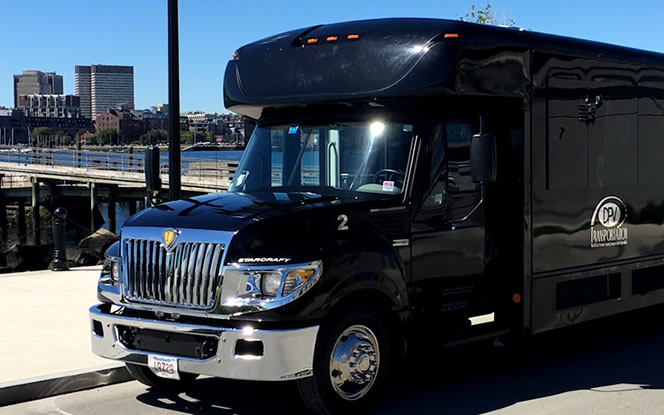Ground transportation operations face numerous challenges, including incidents and breakdowns, accidents, and security concerns. Ensuring the safety and efficiency of fleet management requires a multifaceted approach, incorporating best practices from various domains. In this guide, we will explore strategies to handle emergencies, mitigate unexpected incidents, and enhance overall safety and security in ground transportation.
I. Handling Fleet Incidents and Breakdowns in Emergencies
Preparing Your Drivers
- Regular Training and Clear Procedures
- Drivers serve as the first line of defense. Provide them with regular training on emergency response, preventive measures, and the importance of pre-trip inspections.
- Equip drivers with emergency kits, spare tires, and roadside assistance memberships to empower them to handle unforeseen situations.
- Establishing a Communication System
- Implement a reliable and accessible communication system that connects drivers, maintenance teams, customers, and service providers.
- Utilize a combination of phone calls, text messages, emails, and fleet management software for effective communication, ensuring redundancy in case of network failures.
- Creating a Contingency Plan
- Develop a comprehensive contingency plan covering various scenarios, including breakdowns, accidents, theft, and adverse weather conditions.
- Evaluate the location, severity, and impact of incidents, providing options such as repairing, towing, renting, or replacing the vehicle, and rerouting or rescheduling deliveries.
- Evaluating Performance
- After an incident, conduct a thorough evaluation of the performance of drivers, maintenance teams, service providers, and communication systems.
- Collect feedback, data, and evidence, analyze causes and costs, and update procedures, policies, and training based on lessons learned.
- Preventing Future Incidents
- Implement proactive and preventive maintenance programs to ensure optimal vehicle conditions.
- Monitor fleet performance, optimize routes, and invest in technology to enhance visibility, security, and efficiency.
II. Mitigating the Impact of Unexpected Breakdowns and Accidents
Planning Ahead
- Clear Fleet Maintenance Schedule
- Maintain an updated fleet maintenance schedule, ensuring vehicles are regularly inspected and serviced.
- Establish a network of reliable service providers and develop contingency plans for alternative transportation or delivery options.
- Monitoring Fleet Performance
- Utilize fleet management software, telematics, or GPS tracking to collect and analyze data on vehicle location, speed, fuel consumption, and driver behavior.
- Identify and address issues proactively to optimize routes, schedules, and enhance driver safety.
- Effective Communication
- Establish clear communication channels and protocols for drivers, staff, customers, and service providers.
- Keep stakeholders informed of changes, delays, or issues to minimize confusion and maintain trust.
- Learning from Mistakes
- Develop a system for recording, analyzing, and reporting incidents, breakdowns, and accidents.
- Conduct regular audits and reviews to identify root causes and lessons learned, fostering continuous improvement.
- Investing in Technology
- Adopt smart devices, sensors, cameras, and predictive analytics to monitor fleet condition, performance, and safety.
- Leverage technology to forecast demand, optimize routes, and prevent breakdowns.
- Reviewing Insurance
- Regularly review and ensure adequate insurance coverage for fleet vehicles, drivers, cargo, and customers.
- Understand insurance terms, conditions, and exclusions to facilitate efficient claims processing.
III. Vehicle and Fleet Management – Safety and Security
Duty of Care
- Comprehensive Driver Training
- Prioritize rigorous driver training covering emergency response, defensive driving, and safety protocols.
- Emphasize the importance of pre-trip inspections and reporting vehicle issues promptly.
- Advanced Vehicle Maintenance
- Invest in proactive vehicle maintenance to prevent breakdowns and ensure optimal fleet performance.
- Utilize diagnostic tools and technology for early detection and prompt resolution of potential issues.
- Real-time Monitoring and Telematics
- Deploy telematics and real-time monitoring systems for visibility into fleet operations.
- Analyze data to identify patterns, assess risks, and make informed decisions to optimize routes and schedules.
- Collaborative Communication
- Establish effective communication channels among drivers, maintenance teams, service providers, and stakeholders.
- Utilize multiple communication channels to ensure connectivity in various situations.
- Data-Driven Decision-Making
- Utilize data to make informed decisions and enhance overall resilience.
- Regularly analyze data related to incidents, breakdowns, and operational performance to refine safety protocols and procedures.
- Weather Preparedness
- Develop contingency plans for adverse weather conditions, adjusting routes and schedules accordingly.
- Equip vehicles with necessary tools for inclement weather to ensure safety and operational continuity.
- Continuous Improvement
- Foster a culture of continuous improvement by encouraging feedback from drivers, maintenance teams, and staff.
- Regularly review incident reports, conduct evaluations, and implement corrective actions to refine safety measures and operational practices.
In conclusion, minimizing incidents and breakdowns in ground transportation operations requires a proactive and comprehensive approach. By integrating these best practices into daily operations, organizations can enhance safety, improve efficiency, and build resilience in their ground transportation systems.








